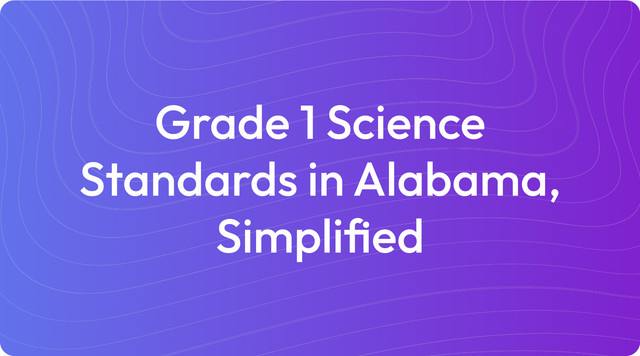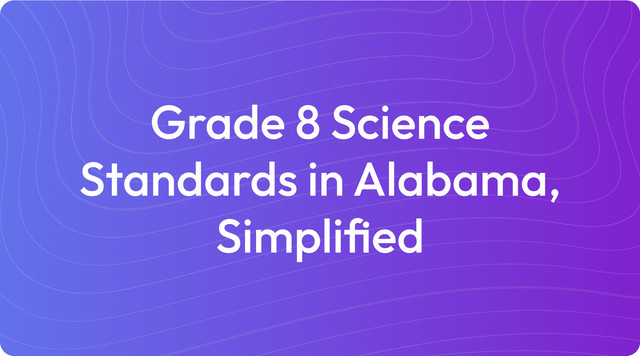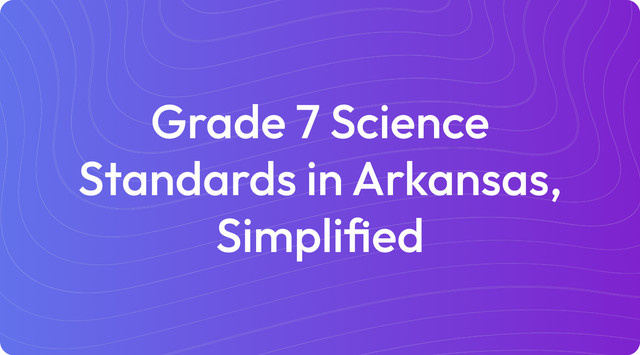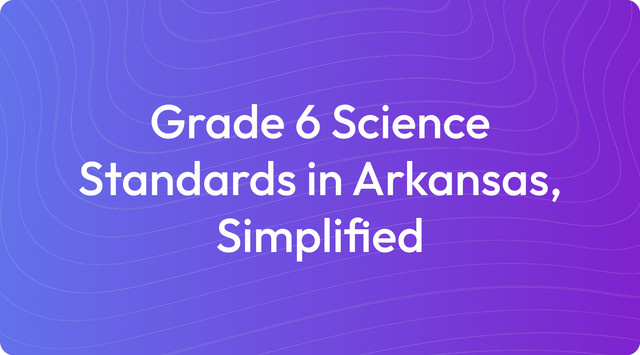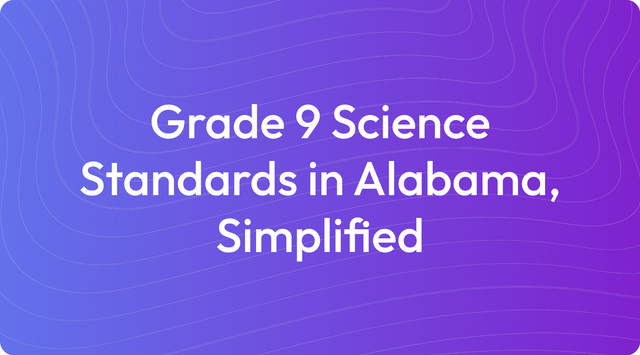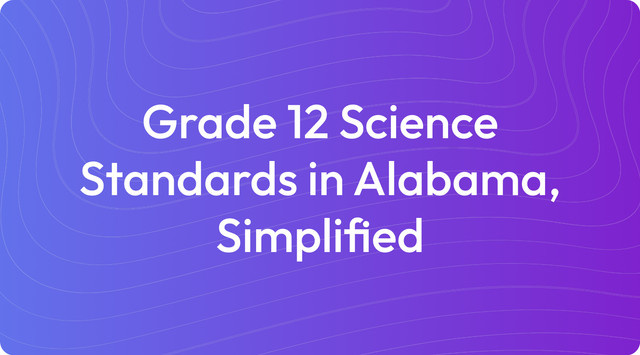Grade 8 Science Standards in California, Simplified
Grade 8 science in California: focus on forces, atoms, and energy. Get the basics—read more on TeachShare!

We understand that working with state standards can be a detailed process. Our goal is to provide clear, practical resources to support you in your planning and instruction. Here, we will look at what education standards are and how they function in the classroom, using a specific set of science standards as an example.
Education standards are learning goals that outline what students should know by the end of a grade level. For teachers, they provide a framework for instruction without dictating specific teaching methods. For example, the Grade 8 Science Standards in California specify that students should be able to apply Newton’s Third Law, but you decide on the best activities and lessons to teach that concept.
What Are Grade 8 Science Standards in California?
The Grade 8 Science Standards for California are built on the California Next Generation Science Standards (CA NGSS). They are organized into four key areas of study to give you a clear roadmap for instruction.
Here are the key areas and standards for Grade 8 Science:
1. Physical Science (PS): Forces, Motion, and Energy
PS2: Motion and Stability
Key Standard (MS-PS2-1): Apply Newton’s Third Law to design solutions to a problem involving the motion of colliding objects.
Key Standard (MS-PS2-2): Plan and conduct investigations to provide evidence of the effects of forces, including gravity, on the motion of objects.
Key Standard (MS-PS2-4): Construct and present arguments using evidence to explain how gravitational interactions depend on the mass of objects and the distance between them.
PS3: Energy
Key Standard (MS-PS3-5): Construct, use, and present arguments to support the claim that when the motion energy of an object changes, energy is transferred to or from the object.
2. Life Science (LS): Natural Selection and Adaptations
LS4: Biological Evolution: Unity and Diversity
Key Standard (MS-LS4-1): Analyze and interpret data for patterns in the fossil record to document the existence, diversity, and extinction of life forms throughout Earth’s history.
Key Standard (MS-LS4-2): Construct an explanation based on evidence that anatomical similarities and differences among organisms can indicate evolutionary relationships.
Key Standard (MS-LS4-4): Construct an argument using evidence to explain how changes in the environment affect the survival of organisms.
3. Earth Science (ESS): Space, History of Earth, and Human Impact
ESS1: Earth’s Place in the Universe
Key Standard (MS-ESS1-1): Develop and use a model of the Earth-Sun-Moon system to describe lunar phases, eclipses, and seasons.
Key Standard (MS-ESS1-2): Develop and use a model to explain the role of gravity in the motions within galaxies and the solar system.
ESS3: Earth and Human Activity
Key Standard (MS-ESS3-3): Design a method for monitoring and minimizing human impact on the environment.
Key Standard (MS-ESS3-4): Construct an argument supported by evidence for how increases in human population and consumption of natural resources impact Earth’s systems.
4. Engineering, Technology, and Applications of Science (ETS): Problem Solving
ETS1: Engineering Design
Key Standard (MS-ETS1-1): Define criteria and constraints of a design problem related to minimizing environmental impact and evaluate competing solutions.
Key Standard (MS-ETS1-4): Develop and test models to optimize a design solution to a problem (e.g., renewable energy projects).
The framework for these standards is guided by the Next Generation Science Standards and resources from the California Department of Education.
Key Tested Standards
When preparing for assessments, it's helpful to know which standards are most frequently tested. The key tested standards for Grade 8 Science in California emphasize foundational concepts across Physical, Life, and Earth Science, as well as Engineering Design. You'll find a strong focus on hands-on investigations, modeling, and evidence-based reasoning.
Below are the key tested standards for Grade 8 Science:
Key Tested Standards for Grade 8 Science in California
1. Physical Science (PS): Forces, Motion, and Energy
MS-PS2-1: Newton’s Third Law - Apply Newton’s Third Law to design solutions to a problem involving the motion of colliding objects.
MS-PS2-2: Forces and Motion - Plan and conduct investigations to provide evidence of the effects of balanced and unbalanced forces on the motion of an object.
MS-PS3-5: Energy Transfer in Motion - Construct arguments using evidence to support the claim that when an object’s motion changes, energy is transferred to or from the object.
2. Life Science (LS): Natural Selection and Adaptations
MS-LS4-1: Fossil Record - Analyze and interpret data from the fossil record to document patterns of diversity, extinction, and evolution of life forms.
MS-LS4-2: Anatomical Evidence of Evolution - Construct explanations based on evidence that anatomical similarities and differences among organisms indicate evolutionary relationships.
MS-LS4-4: Environmental Changes and Survival - Construct an argument using evidence to explain how environmental changes affect the survival and reproduction of populations.
3. Earth Science (ESS): Earth’s Systems and the Universe
MS-ESS1-1: Earth-Sun-Moon System - Develop and use a model to describe how the Earth-Sun-Moon system causes lunar phases, eclipses, and seasons.
MS-ESS1-2: Gravity in the Solar System - Develop and use a model to explain how gravity governs the motion of objects in the solar system.
MS-ESS3-4: Human Impact on Earth - Construct an argument supported by evidence for how increases in human population and consumption of natural resources impact Earth’s systems.
4. Engineering, Technology, and Applications of Science (ETS): Solving Problems
MS-ETS1-1: Define and Solve Design Problems - Define a design problem involving criteria and constraints and evaluate competing solutions to minimize environmental impact.
MS-ETS1-4: Optimize Solutions - Develop and test models to optimize a solution to a problem (e.g., reducing energy waste).
Key Crosscutting Concepts (CCCs):
Cause and Effect: Understanding how forces or environmental changes cause observable effects
Systems and Models: Exploring systems like the solar system, ecosystems, or forces and motion
Energy and Matter: Analyzing how energy is transferred in systems, such as collisions or energy transformations
Why These Standards Are Key for Testing:
Students are assessed on their ability to:
Develop and Use Models: For example, modeling the Earth-Sun-Moon system or forces acting on objects.
Conduct Investigations: For example, testing Newton’s Laws or energy transfer in motion.
Analyze and Interpret Data: For example, analyzing fossil records or force and motion data.
Construct Evidence-Based Explanations: For example, explaining evolutionary relationships or the environmental impact of human activities.
We've compiled this information based on official guidance to help you focus your instruction the Next Generation Science Standards and the California Department of Education.
Example Learning Objectives for Unit Planning
Learning objectives break down broad standards into specific, student-centered goals. They clarify what students should be able to do after a lesson, guiding both your instruction and their learning path. Here are examples for two Grade 8 Science standards, written in student-friendly language to align with the NGSS three-dimensional learning approach.
Standard: MS-PS2-2
Plan and conduct an investigation to provide evidence that balanced and unbalanced forces affect the motion of an object.
Learning Objectives:
I can explain the difference between balanced and unbalanced forces and how they affect an object’s motion.
I can design and carry out an experiment to test how different forces (e.g., pushes, pulls, friction) affect the movement of an object.
I can record data about how an object’s speed or direction changes when forces act on it.
I can use my experimental results to explain how balanced forces keep an object steady and unbalanced forces cause movement.
Standard: MS-LS4-1
Analyze and interpret data for patterns in the fossil record to document the existence, diversity, extinction, and change of life forms throughout Earth’s history.
Learning Objectives:
I can explain what a fossil record is and how scientists use it to study life on Earth.
I can analyze fossil data to identify patterns, such as when organisms appeared, evolved, or went extinct.
I can describe how the fossil record shows that Earth’s environments and life forms have changed over time.
I can use evidence from fossils to explain how life on Earth has become more diverse over millions of years.
Key Changes & Updates
The Grade 8 Science Standards saw a significant update with the 2013 adoption of the California Next Generation Science Standards (CA NGSS). This change moved instruction away from fact memorization and toward a more active, three-dimensional learning model. The approach combines what students do (Science and Engineering Practices), how they think across disciplines (Crosscutting Concepts), and what they know (Disciplinary Core Ideas). The goal is to help students build a deeper understanding of science through hands-on exploration and inquiry.
In practice, these updates mean your lessons can be built around real-world phenomena, making science more relatable for students. There is a greater focus on integrating engineering design, which encourages problem-solving and creative thinking. Instead of just learning facts, students are now expected to conduct investigations, analyze data, and construct evidence-based arguments. This shift helps build critical thinking skills and prepares students for future studies and careers in science and technology fields.
Create with TeachShare
We know that turning these standards into engaging, effective lessons takes time and effort. Our platform is designed to support you by making it easier to create high-quality, standards-aligned materials for your classroom. Let us help you focus more on teaching and less on prep work. Start creating standards-aligned instructional resources with TeachShare now.
Frequently Asked Questions
What are the main topics covered in Grade 8 Science?
The Grade 8 science curriculum is built around four key areas of study:
- Physical Science: This includes forces and motion, such as Newton’s Laws, along with energy transfer and the properties of matter.
- Life Science: Students explore natural selection, evolution, adaptations, and how environmental changes impact different populations.
- Earth and Space Science: This covers the Earth-Sun-Moon system, the role of gravity in our solar system, and the effects of human activity on Earth’s resources.
- Engineering and Problem Solving: A practical component where students design, test, and refine solutions to real-world challenges.
What is different about the NGSS Grade 8 Science Standards?
The NGSS framework shifts the focus toward a more interactive and application-based learning model. The main differences include:
- Three-Dimensional Learning: This approach combines scientific practices, crosscutting concepts, and core ideas to create a more connected understanding of science.
- Hands-On Investigations: There is a strong emphasis on students actively exploring scientific phenomena through experiments and building models.
- Real-World Applications: Lessons are designed to connect directly to students' everyday experiences, from energy use to environmental topics.
- Engineering Design: Students are tasked with designing and testing solutions for practical problems, like resource conservation.
What are some examples of activities for Grade 8 standards?
Here are a few examples of classroom activities that align with these standards:
- Newton’s Laws: Students can design experiments with toy cars and ramps to observe how forces influence the motion of colliding objects.
- The Fossil Record: You can have students analyze fossil evidence to identify patterns of evolution and extinction over geological time.
- Earth-Sun-Moon System: Students can create physical models to demonstrate how lunar phases occur or to simulate solar and lunar eclipses.
- Human Impact: A project could involve students developing a plan to reduce local pollution or conserve water resources in their community.
How do these standards connect to real-world applications?
These standards help students see the relevance of science in their daily lives. For example:
- Forces and Motion: This knowledge applies directly to understanding car safety features like airbags and seatbelts.
- Natural Selection: Students can explore how different species are adapting to modern challenges like climate change and habitat loss.
- Earth Systems: This connects to current events by helping students understand the consequences of deforestation and pollution on ecosystems.
- Engineering Design: Students can work on projects like designing simple renewable energy solutions or creating better systems for managing waste.
How are students assessed in Grade 8 Science?
Assessment methods are varied and focus on a student's practical understanding rather than just memorization. Common assessment types include:
- Hands-On Investigations: Evaluating a student's ability to conduct experiments related to forces, energy, or chemical reactions.
- Models: Assessing the diagrams or physical models students create to explain concepts like the Earth-Sun-Moon system or food webs.
- Data Analysis: Looking at how students graph and interpret data from their experiments.
- Explanations and Arguments: Grading students on their ability to construct clear, evidence-based explanations for scientific phenomena.
Answer


